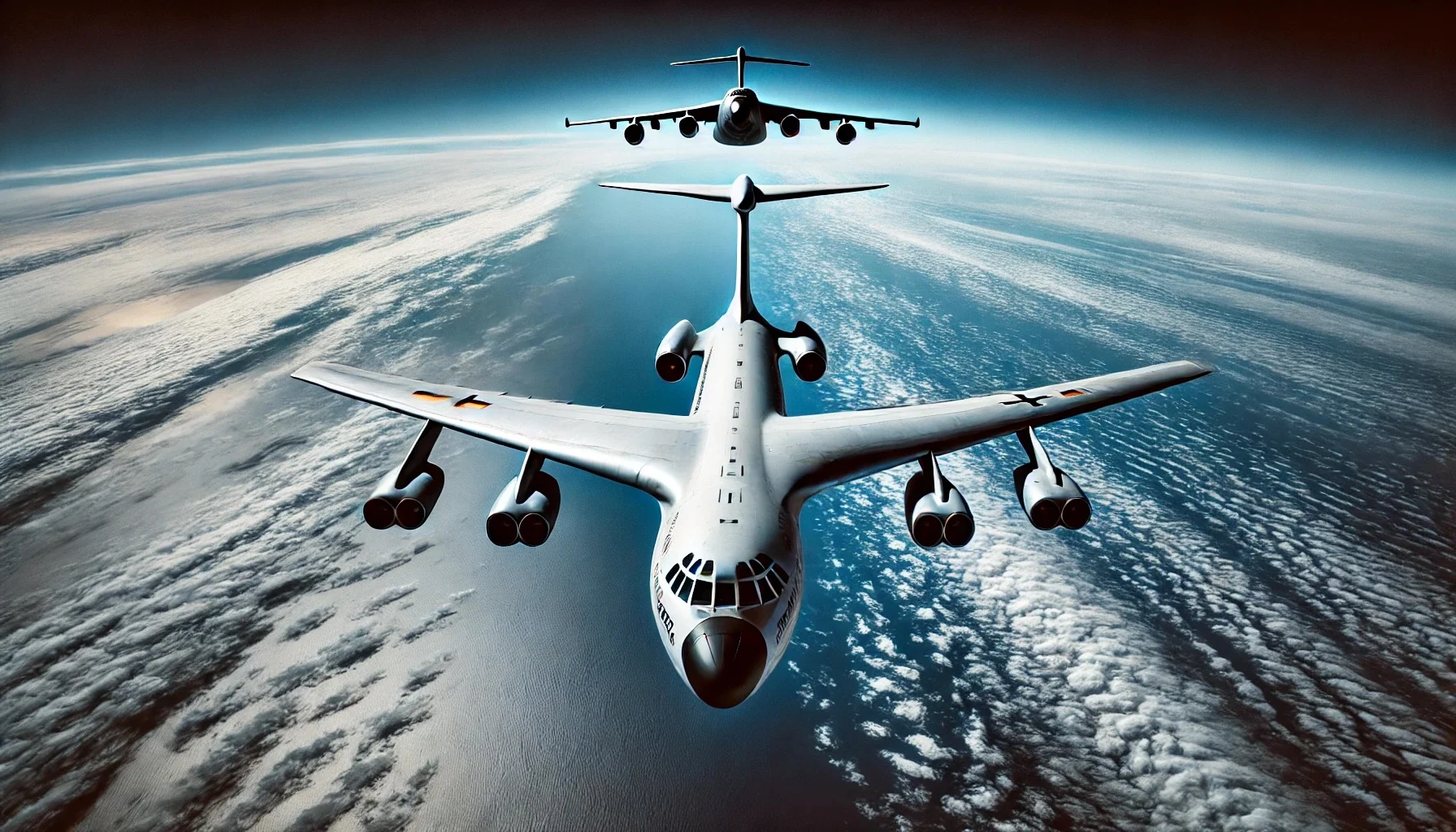
The 1997 Namibia Mid-Air Collision
by: The Calamity Calendar Team
September 13, 1997
It was a routine mission in what should have been calm skies. But, on the fateful afternoon of September 13, 1997, two military flights—one from the German Air Force and one from the U.S. Air Force—ended in tragedy over the South Atlantic Ocean.
The German Tupolev Tu-154M was returning from a peacekeeping surveillance mission off the coast of Angola. It was part of Germany’s ongoing involvement with United Nations efforts to enforce an arms embargo in the region, operating a reconnaissance flight. The Lockheed C-141 Starlifter, a staple of the U.S. Air Force’s logistics fleet, was headed for Ascension Island, carrying out a routine cargo transport mission from Namibia.
Both planes had their flight paths clearly defined, or so it seemed. In such remote parts of the world, air traffic control relied heavily on verbal communication between pilots and controllers, as radar coverage was sparse. The South Atlantic airspace wasn’t typically busy, and coordination, though essential, wasn’t always as strict as it should have been. However, in the vast skies, small errors can have fatal consequences.
What neither crew knew was that they were flying toward each other at a combined speed of almost 860 miles per hour.
A Fatal Misstep
At 35,000 feet, the two planes were following their assigned flight levels—but a miscommunication had put both aircraft at the exact same altitude. The U.S. Air Force Starlifter was cruising along smoothly, its crew likely focused on routine duties. On the other hand, the German Tu-154M, lacking a Traffic Collision Avoidance System (TCAS), was unknowingly at the wrong altitude, set on a dangerous collision course.
Air traffic control, unable to fully track the aircraft due to the limitations of radar coverage in this remote region, missed the conflict. Neither plane was equipped with the now-standardized automated systems that would have warned the crews of the impending danger.
Thanks for subscribing!
As they hurtled toward each other over the endless blue expanse of the Atlantic, the two massive aircraft collided violently, disintegrating in the sky. The debris rained down into the ocean below, leaving no survivors. All 33 people aboard—24 on the German plane, including high-ranking military personnel, and 9 on the American flight—were killed instantly.
The Aftermath and the Search for Answers
In the wake of the accident, a joint investigation between Germany, the United States, and Namibia sought to understand how such a catastrophic error could have occurred. Initial recovery efforts were complicated by the remoteness of the crash site, with much of the wreckage sinking into the Atlantic depths.
As the investigation unfolded, it became clear that the German aircraft had been flying at the wrong altitude—an error that went unnoticed by air traffic control. Contributing to the disaster was the lack of TCAS onboard the Tupolev, a system that would have warned of the oncoming U.S. Starlifter and possibly given the pilots time to avoid the crash.
In the late 1990s, the TCAS technology was not yet widely implemented in military aircraft, despite its growing adoption in the commercial aviation sector. This accident underscored the need for such technology in all aircraft, regardless of their mission or location.
A Lasting Legacy
In the years following the tragedy, both military and civil aviation authorities made significant strides in improving safety measures for flights operating in remote airspaces. The crash spurred the accelerated adoption of automatic collision avoidance systems and stricter air traffic control procedures in less-monitored areas like the South Atlantic.
In addition, radar and communication technologies were expanded to ensure that even in the most isolated parts of the world, planes would be closely monitored. The Namibia mid-air collision was a harsh lesson in the costs of complacency, but its legacy has been one of progress.
Today, the skies are safer for both military and civilian aircraft, thanks in part to the hard lessons learned from this tragic event. Though the memories of those lost in the September 1997 collision may fade with time, their sacrifice helped change the future of aviation for the better.
Stay in the Loop!
Become a Calamity Insider and get exclusive Calamity Calendar updates delivered straight to your inbox.
Thanks! You're now subscribed.